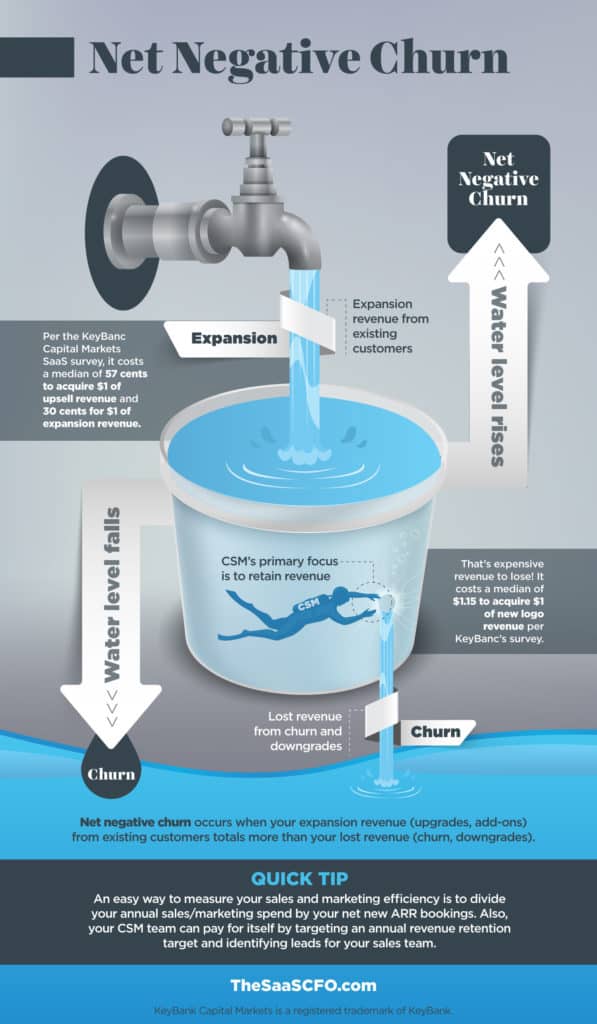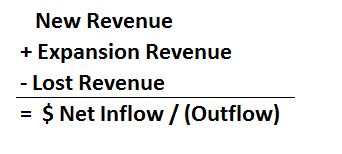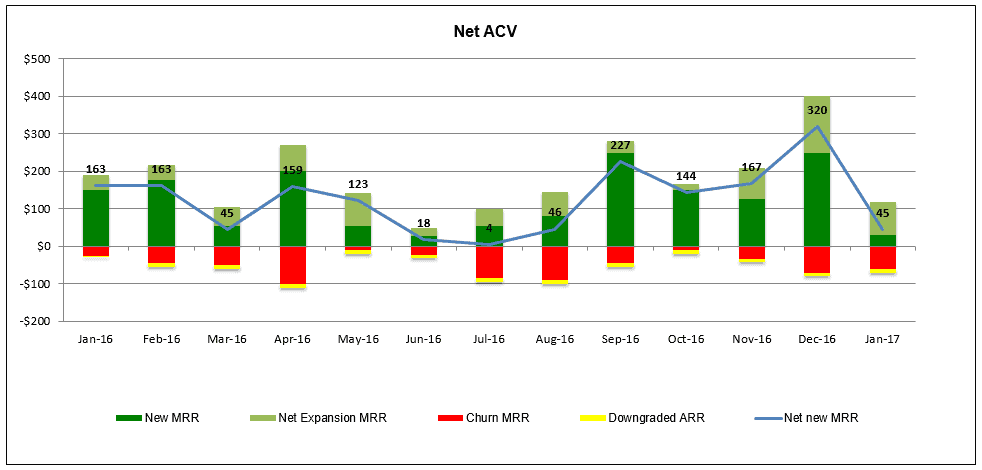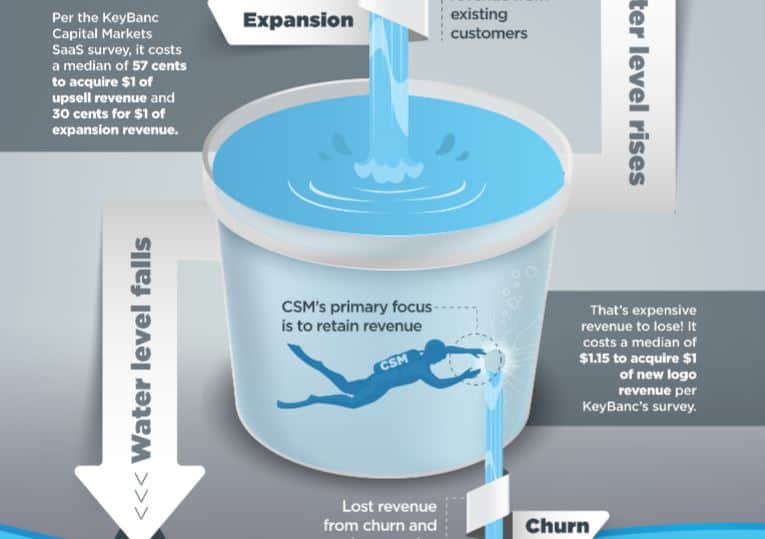Net negative churn occurs when your expansion revenue from existing customers totals more than your lost revenue from existing customers. This SaaS metric does not factor in any revenue from new customers, just existing customers.
As Nathan Latka puts it in his “The Top” podcast, this is the holy grail of SaaS. Your recurring revenue is expanding without adding new customer revenues resulting in positive net revenue retention. Obviously, that’s a great thing. Plus adding revenue from existing customers is typically much more cost effective than new customer acquisition.
By the way, The Top is a great podcast to learn more about SaaS metrics and economics.
Net Negative Churn Formula

The graphic above illustrates the net negative churn formula. Expansion revenue includes upsells and add-ons from existing customers while lost revenue includes downgrades and/or completely lost customer revenues. The numbers are above are just an example.
The formula above is in percent, but you can also calculate by dollars or even flip the formula around. Don’t get too hung up on the positive or negatives in the formula.
The main point is that expansion revenue more than covers lost revenue to achieve net negative churn (or positive net revenue retention).

Track your Bookings
The net negative churn formula is pretty straight-forward, right? However, if you are not in the habit of tracking the correct data, even this formula will cause you headaches.
Each month you should be tracking your bookings and cancellations data, so that you can calculate net negative churn. Make sure that you track lost logos (logo churn) as well, because logo churn and revenue churn metrics are also critical metrics.
Net Revenue Retention – Don’t Stop Now
I like to take the net negative churn formula and advance it one step further by tracking total revenue retention. To do this, you simply add new customer revenue to the equation.

As a CEO or CFO, this is a fun and critical metric to track each month. As David Skok states, this is the cornerstone chart/data that management should use to run their business. Needless to say, if you are racking up net outflows each month, it’s time to reassess your business. The goal is to have the blue line in the chart below above zero.

Conclusion
Track your bookings and cancellation data! Net negative churn is the holy grail in SaaS as Nathan puts it, but it’s just as important to understand year-over-year expansion in your customer base (i.e. same store sales in the retail world), logo churn, and revenue churn.
What’s an important churn metric for you? Please share below in the comments section.
To download a printable, high-res version of the infographic above, please enter your valid email below (no spam) for the instant download. I’ll keep you updated on future SaaS Excel models and infographics.
I have worked in finance and accounting for 25+ years. I’ve been a SaaS CFO for 9+ years and began my career in the FP&A function. I hold an active Tennessee CPA license and earned my undergraduate degree from the University of Colorado at Boulder and MBA from the University of Iowa. I offer coaching, fractional CFO services, and SaaS finance courses.

What is logo churn? Love this siteand the new infographic
Tori,
Logo is churn is the number of customers completely leaving your product. Whereas revenue churn could be lost revenue from a downgrade and/or lost revenue from a customer leaving. It’s important to measure both because they do usually produce different answers.
Ben
Hi Ben,
If I am calculating this on an annual basis, should I include expansion / churn from customers that only joined during the year? i.e. they were not a customer 12 months ago, but have since joined and expanded.
Thanks,
Amy
Hi Amy,
Yes, I would include customers that joined during the year. But you also calculate it by only tracking the customers on board at the beginning of the year. This would then measure it on a cohort basis.
Ben